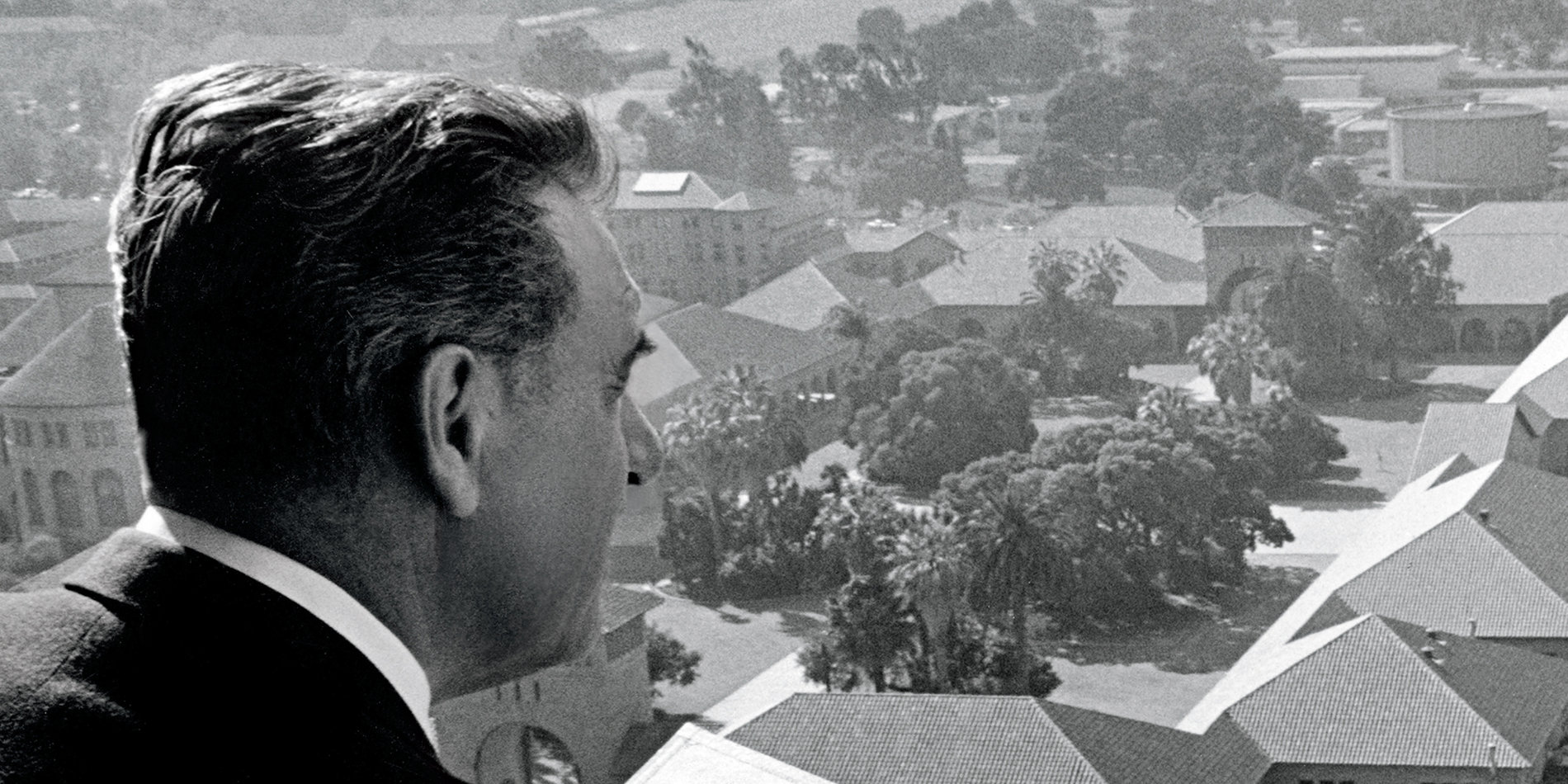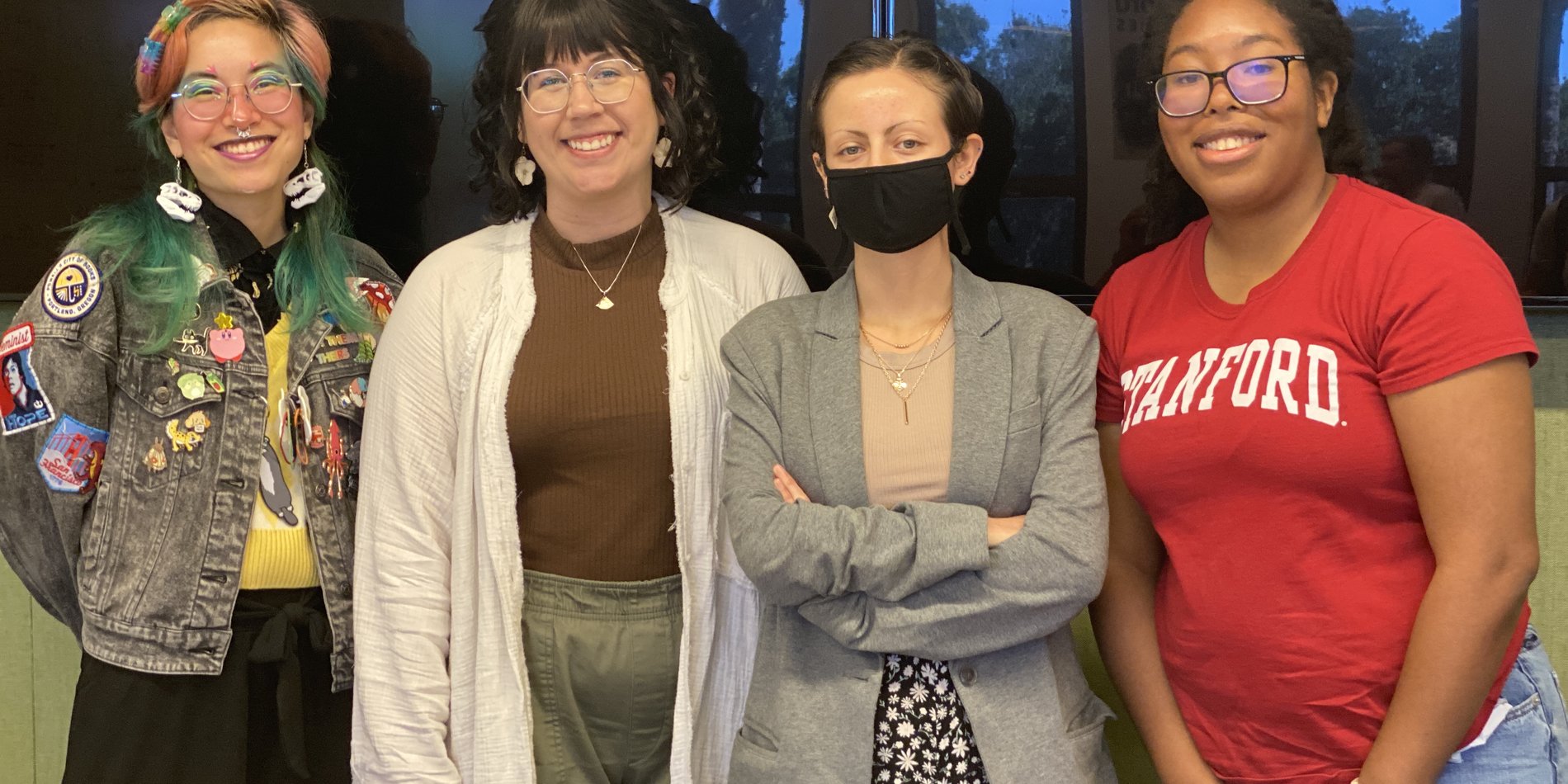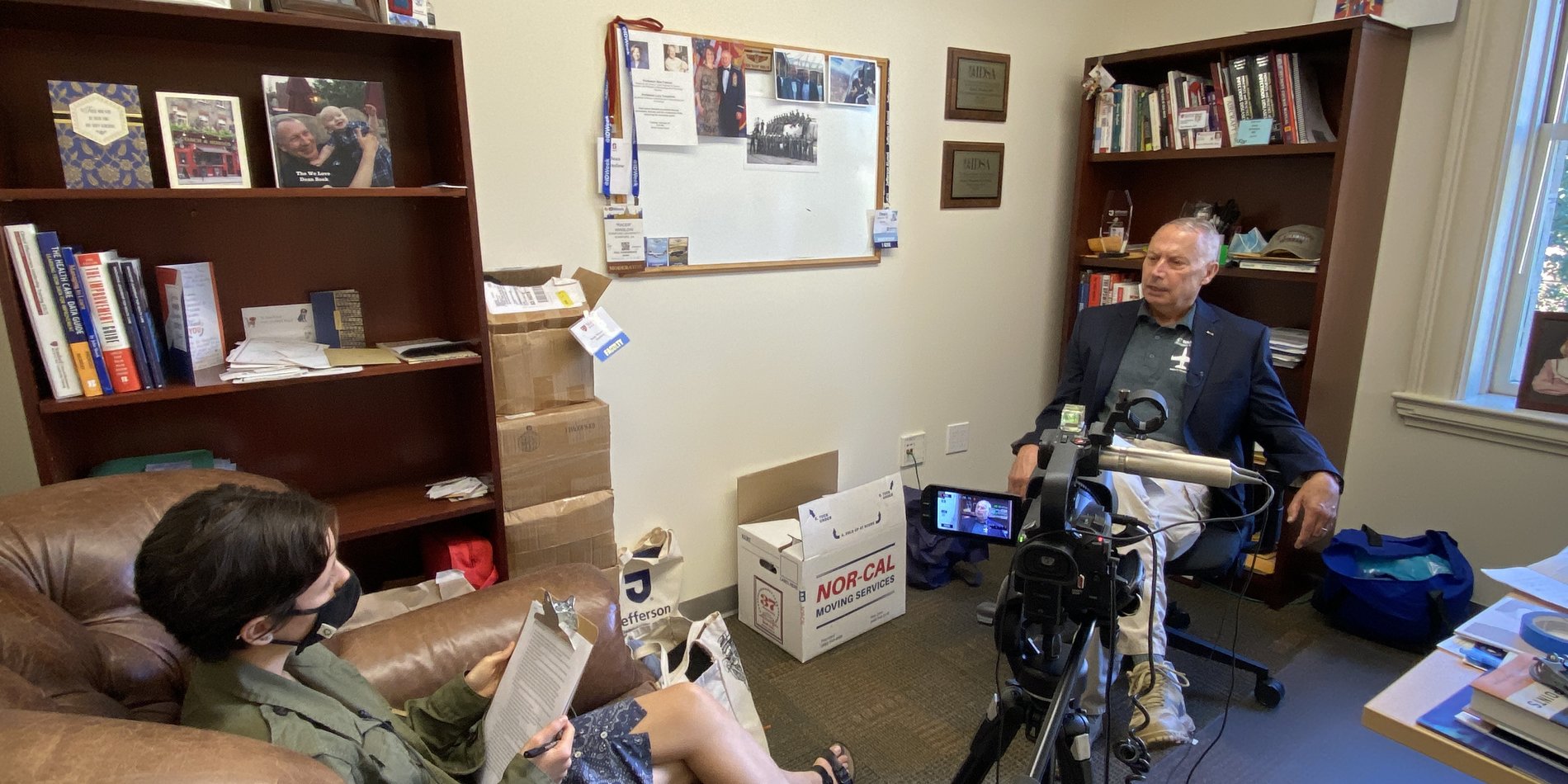Guest Blogger: Summer Intern Arynn Carty

Undergraduate student Arynn Carty interviewing Professor of Geophysics Paul Segall (Stanford Historical Society)
I have always really loved history. In high school, I worked at my local history museum, and I spent a lot of time in a house styled after what a house in the 1930s would look like. One of my favorite things to do was go to the kitchen, open the cupboard, and look at all the food items that were typically in a 1930s household. I loved to learn about the day-to-day aspects of life in the past–small details, something as simple as the food that fills the cupboards. In a way, oral history is a lot like opening a cupboard, it gives you access to the day-to-day experiences that can often be glossed over.
My first formal introduction to oral history occurred this past spring in a class called History 200L: Doing Public History. There, I had the chance to work with the Stanford Historical Society Oral History Program and conduct my own oral history interview. I had the opportunity to further immerse myself in the field this summer through the Oral History Program Summer Internship where I edited transcripts, wrote abstracts, compiled interviews, and even conducted some interviews myself. The bulk of the interviews I worked on were from the 2022 reunion. In reading these transcripts, I learned more about Stanford than I could have ever imagined and examined the ways in which oral histories contributed to building a robust historical record. Through this experience, I learned that oral history builds a tapestry of multiple perspectives, illustrates everyday practices of the past, and uncover stories that have been long buried.
In reading the alumni interviews, I started to notice the connections between them, something I would describe as a web being formed. For example, Marian M., class of 1972, mentioned that she and a group of friends started the cooperative house, Columbae during her time as an undergraduate student. The 1960s and 1970s was a time of heightened political activity on campus, for instance, the anti-war movement. Marian mentioned how the house was created as a space for politically conscious individuals to have discussion and to live a “back-to-the-earth” lifestyle. After reading Marian M.’s interview, I began to take note of mentions of “Columbae” in future interviews. It appeared again in Cecilia M.’s interview, who graduated ten years later in 1982, and again in Leslie Ann R.’s interview who graduated in 1992. Leslie Ann shared fond memories of living in Columbae, describing moments of sitting outside and watching silent movies while techno music played in the background. Through listening to oral histories, we can see the ways in which Columbae evolved over the years. Each story that a previous resident shared is a puzzle piece in the overall history of the house, creating a fuller, more robust history.
During my interview training, Dr. Natalie Marine-Street, the manager of the Oral History Program, mentioned the importance of asking questions about everyday practice, which in turn is important in understanding how technology of the past operated. As I read Duane S.’s interview, I saw an example of this importance in the case of the Stanford Draw. I had heard of the Draw before and knew of its basics, that a student got a number, and that number determined the order that student chose housing for the next year. I always assumed this process was done by computer, and assumed that the computers of the late 1980s had the capacity to, and were used to, randomly generate and assign numbers to students. Imagine my surprise when he started off the story talking about two large buckets filled with tiles in Old Union.
Duane described a Draw that was completely out of my imagination. Each year The Draw had a different theme, for instance, movies. Old Union was decorated, people dressed up, and the line was out the door. The main event? Drawing a numbered tile out of a bucket. As Duane described, “it [was] almost like the lottery amplified a hundred times because it was determining the quality of your life for the next year”. As I thought about this more, I realized how useful oral histories were in documenting the ins and outs of processes like The Draw. Often, we do not find the things we do in our daily life interesting enough to document. I’m sure people in the 1990s didn’t think twice about The Draw because to them, it was just normal, nothing out of the ordinary. I don’t think twice about my everyday practices because it all seems so normal to me. But in the future, it might be out of the ordinary.
In conducting my own interview with Paul Segall, the Cecil and Ida Green Professor of Geophysics, I tried my best to ask questions about the technology that he mentioned. Going into the interview, I was nervous about my knowledge of geophysics. Of course, I had done a significant amount of research beforehand, by learning about his current research and reading through some of his papers. But, to the surprise of no one, I was not able to become an expert in geophysics in the weeks leading up to the interview. I worried about how this would affect the interview, surely some things would go over my head. However, it was not the hindrance I had feared. Some things did go over my head, but I was also able to ask a follow-up question on subjects that may have otherwise been glossed over. For example, Segall mentioned an advancement in GPS technology. I didn’t understand it, so I asked a follow-up question asking him to describe it and ended up with a lovely depiction of the technology. This is not to say this could not have been done if the interviewer was a geophysicist. They just would have to be mindful to ask questions about things they may already understand. I must be mindful of this too in other interviews where I’m more of an expert on the topic. That way we do not miss out on these depictions of technology like the example above and also other everyday practices as well.
Finally, oral histories can be used to uncover stories that have been buried. I had the opportunity and the pleasure to interview Warren C. Hayman. Hayman received his master’s degree in education from Stanford in 1967. He was instrumental in the founding of the Black Student Union at Stanford and negotiated for the demands of Taking the Mic in 1968. During the interview, Hayman made a profound point stating, “Oftentimes, the people who really made a difference are not at Stanford.” He mentioned how, in the conversation of Taking the Mic, we often see this picture:

Taking the Mic protest April 1968. Frank J. Omowale Satterwhite speaks from the podium. (Painter / Stanford News Service)
and how we read and listen to the interviews of Warren Hayman, Keni Washington, and Frank Omowale Satterwhite, who are undoubtedly important, but we do not hear the stories of others who were also important in the movement.
Throughout the interview, Hayman consistently mentioned that there were five freshmen women that were instrumental at the start of the BSU. He shared how they gathered the contact information of the Black students on campus to invite them to meetings and how they made fliers. However, Hayman explained how, at the time, “[his and the other men of the BSU’s] masculinity would not allow [them] to put the [freshmen women] out front.” This is a prime example of how oral histories can serve almost as a “healing” history in which stories that were buried in the past can now be uncovered. With the names that Hayman cited during the interview, we can now hopefully reach out to these individuals and hear their stories. Those individuals might share other names, and so on. This process works to create a broader, more complete, history.
When I was writing my college applications, I wrote about how my dad and I used to go on drives and there was this section where you could see what felt like the entire Bay Area. Every house, every store, every park, every school, that made this place what it is. I explained how there was so much to uncover, so much to see, so many stories to hear, and so many “cupboards” to open. In college, I wrote, I wanted to continue to explore the smaller details. Working as an intern this summer has allowed me to follow through with this passion.


